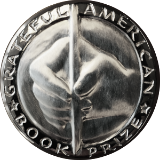History can be a yawn-inducing bore in the classroom
WASHINGTON, DC, Aug 31 – “It’s amazing how history can be a bore in the classroom, but when young learners become adults they develop a desire to learn more about the past, as evidenced by the popularity of historical novels and films,” according to author and education advocate David Bruce Smith.
He says the traditional use of text books as an exclusive source for students may be to blame.
“The assigned books used in most history classes are a necessary source for names and dates, and for describing the events that shaped the past in a factual manner. But they do little to inspire a passion for the subject. Most teachers know that and so they use extracurricular activities as a means of engaging their students. For example, one of the most popular methods of stirring young learners is to have them read historically accurate works of fiction and nonfiction– particularly whose that tell stories with which they can identify. It might be a tale of adventure or a relevant biography.”
Smith is so ardent about the use of engaging books as a means of generating interest among young students to learn about the founding and evolution of America, that he established the Grateful American Book Prize. It’s an annual award for authors who focus on the genre. “We want to give writers and their publishers another reason to produce more books that can help evoke curiosity in students about their country. We want to give American history an appeal for students. We want students to relate to the people and events that created the nation in which we live and its place in the global community.”
John Gray is the Elizabeth MacMillan Director of the Smithsonian’s National Museum of American History. He is also one of the judges for the 2016 Prize and had this to say about the use of novels as a tool for teaching history: “Historical fiction, particularly if history is presented in an engaging and truthful manner, opens the door to young people with key moments primarily through characters that are age appropriate and who face relatable challenges even though the stories might be set in the 18th or 19th centuries. Historical fiction also makes complicated and distressing topics such as slavery, the Holocaust and even September 11, easier to introduce to a pre-teen audience.”
A variety of surveys and studies in recent years show how deficient students are in their knowledge of history. And, there is plenty of anecdotal evidence which proves they are not absorbing their classroom history lessons, particularly in view of the 21st Century focus on STEM education which emphasizes science, technology, engineering and mathematics.
How important is it for our kids to understand the past? An Associated Press analysis concluded that history teaches us “how to become better citizens.” It reinforces the notion that students, especially those in grade school, need to know why historical events and the people who helped build the country are so important to us today and in the future.
“Learning history means the development of critical thinking skills. Recently, we have seen school curriculum that puts an emphasis on original source documents and nonfiction, including biography. Biography can provide a richness and help energize children about the past. In our Smithsonian museum stores, we carry the series of “Who was?” biographies aimed at kids. Seeing that extraordinary figures such as Benjamin Franklin, Amelia Earhart and Harriet Tubman were once children like themselves helps young people navigate their way in the real world and understand that they too, are makers of history. History is complicated, exciting and ever-changing. So much remains to be written to thrill students with new concepts and understanding of American history,” according to Gray.
The panel of judges will select this year’s Grateful American Prize honoree in time for the October 6th presentation ceremony at the Library of Congress. In 2015 Kathy Cannon Wiechman won for her civil war novel, Like a River, which one history teacher said was as important a work as the classic, The Red Badge of Courage.




